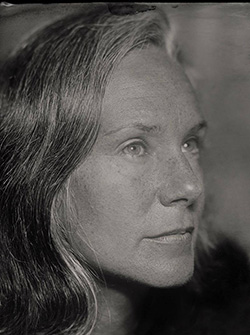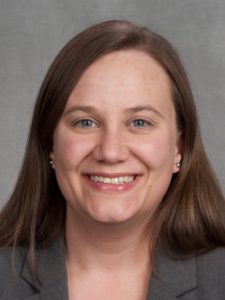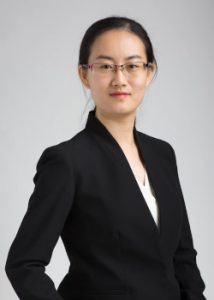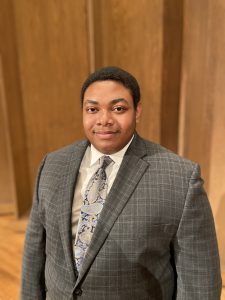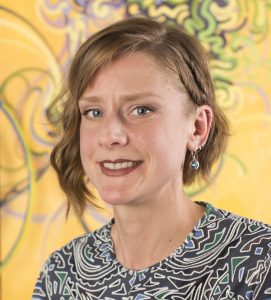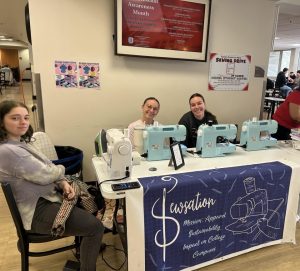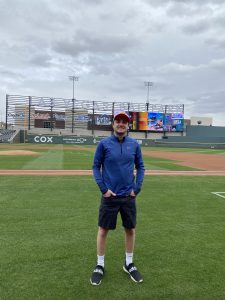Bradley’s Associate Professor of Photography Margaret LeJeune was named the 2023 Woman Science Photographer of the Year by the Royal Photographic Society and keeps her students inspired to never give up on their photography journey.
Growing up, LeJeune’s father worked at Kodak so she’s been surrounded by photography since a very young age.
“When I was a very little kid, probably like five or six, I remember him bringing home photo paper that I would draw on,” LeJeune said. “I feel like my youngest memories and experiences were with photography in these nontraditional ways.”
LeJeune’s grandmother owned Polaroid cameras, so when her father brought home a Kodak Instamatic camera, she remembers a family feud arising against the two based on the competition of the camera brands.
Originally, LeJeune started her undergraduate degree with a major in art education, but quickly realized she didn’t want to teach young kids and wanted to teach photography at college level. She wanted to be able to collaborate with students, as well as work on her own research.
“I love that sort of lightbulb moment; we all have those moments and I think they happen quite often in the educational setting,” LeJeune said. “Even in high school, I had incredible art teachers who really encouraged me to pursue the thing that I was passionate about rather than the thing that might make me money or get me a good job.”
Before coming to Bradley, LeJeune was a professor in Rochester, New York from 2001 to 2007. Shortly after, she taught at Lyon College, a small liberal arts college in Batesville, Arkansas from 2007 to 2012.
When deciding which college to teach at, LeJeune chose Bradley because of the mid-sized campus where she felt that there were chances to do things such as interdisciplinary research. She was excited about the close proximity from Olin Hall to the art building where she could meet with colleagues who could help her work through her ideas that involved scientific data and research.
At Bradley, LeJeune teaches various photo classes ranging from the basic black-and-white darkroom and basic digital to senior capstone projects. Through these projects, students learn about real world exhibitions and work with galleries. Along with these classes, she also teaches alternative process photography, which teaches students about non-traditional ways to print photographs.
LeJeune instructs another class that is part of the sustainability minor and involves capturing different environments and habits titled Art and The Environment. Currently,her class is looking at the habitats of Illinois and creating work about the wetlands, forests and prairies that make up the state. While capturing the different environments around Illinoisans, the class strives to inform the public about what is happening in these environments during the climate change crisis. All of the class materials that are used are ecosystem-based.
All of LeJeune’s work led to her earning the 2023 Woman Science Photographer of the Year.
“It means a lot to me because it’s an award that helps to really amplify the voices of women artists and women scientists,” LeJeune said. “It also helps to talk about the intersection where art and science meet. To win that award just felt like an amazing honor that really celebrates everything I’ve been working on these last 20 years.”
The main winner of the award was a piece called “Watershed Triyptich.” This piece is part of a larger project called “Growing Light.” Within this project, LeJeune is using bioluminescent organisms that she grew in her studio to create photographic light.
While sailing on her boat, she noticed how she was seeing bioluminescent organisms in certain places and not others. This struck her curiosity to look deeper into the phenomenon and find out why this was occurring.
The project came about from the support of scientists who believed in the importance of art and wanted to help create conversations about the two subjects. LeJeune worked with colleagues on Bradley’s campus who helped make the growing of these organisms possible.
LeJeune also worked with Edith Witter, a MacArthur Fellow who co-founded the Ocean Research & Conservation Association (ORCA). Through this partnership, LeJeune was able to get Witter’s seawater recipe, which guided the process for growing bioluminescent organisms.
During the research process, LeJeune learned that the effects of climate change resulted in the overflow from factory farming, which was getting into watersheds. The contamination created changes in the ocean waters that caused bioluminescence and red tides to occur.
Another one of LeJeune’s projects titled “Ostracods” was shortlisted in the competition as well. There are about 23 works that are displayed among LeJeune’s works at the Society House in Bristol, England.
“Art has the opportunity to generate conversations about science that perhaps science can’t have, so I think it’s really important that we work together in those ways to bring together the arts and the sciences to really help engage the public more broadly,” LeJeune said.
